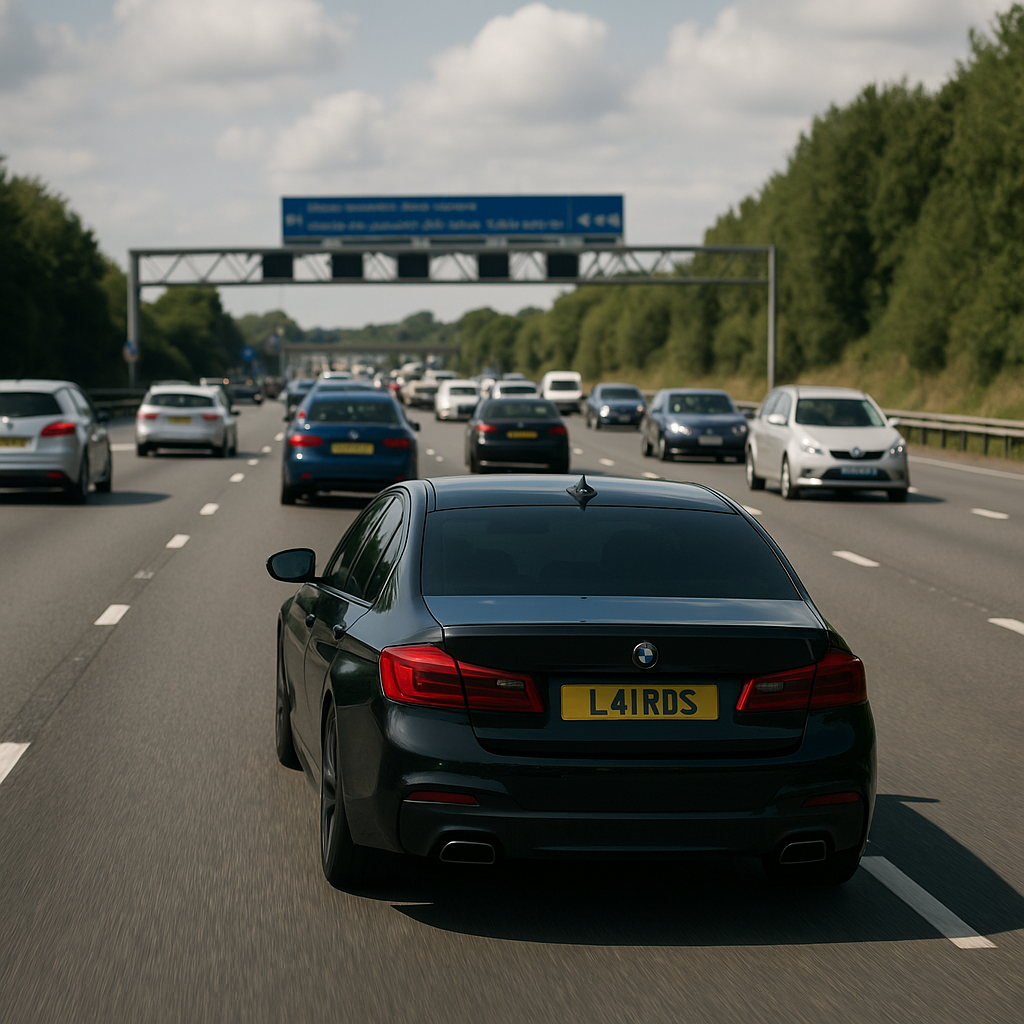The Autumn Budget on Wednesday is shaping up to be one of the most consequential for UK motorists in years. While nothing is confirmed until the Chancellor stands up in Parliament on 26 November, there’s now a clear pattern in the briefings, leaks and think-tank reports.
From where we sit at Laird, working every day with motorists, insurers, fleets, bodyshops and solicitors, these are the likely changes and what they could mean in the real world of running, repairing and insuring vehicles.
1. The big picture: why this Budget matters for drivers
The Government faces a sizeable fiscal gap and has been explicit that taxes will need to rise overall. At the same time, fuel duty revenues are falling as vehicles become more efficient and more drivers move to EVs.
Motoring is an obvious target because:
-
It raises large, predictable sums (fuel duty, VED).
-
The shift to EVs is undermining that revenue.
-
Road maintenance backlogs and net-zero commitments both need funding.
So we’re likely to see a combination of new charges on EVs, higher costs at the pump, and targeted changes to existing schemes rather than one single dramatic measure.
2. Fuel duty: a likely rise in the cost of filling up
Since 2022, drivers have benefited from a temporary 5p-per-litre cut in fuel duty. Multiple reports now suggest this cut is likely to be reversed in the Budget.
Analysts expect that:
-
Petrol could drift above £1.42 per litre.
-
Diesel could head towards £1.50 per litre, close to previous record highs.
What this means for motorists
For an average private motorist doing 8,000–10,000 miles a year in a typical petrol car, that’s £80–£150 more per year on fuel alone.
From a Laird perspective, we’d expect:
-
Increased cost pressures on households, which can feed through into:
-
More people are delaying routine maintenance.
-
More older vehicles are staying on the road for longer.
-
-
For fleets and commercial operators, higher fuel bills may:
-
Push harder on downtime costs – getting vehicles repaired quickly becomes even more critical.
-
Making an accurate assessment of repair vs. total loss is critical to deploying capital efficiently.
-
3. Pay-per-mile tax for EVs: road pricing by the back door?
The most eye-catching rumour is a pay-per-mile tax for electric vehicles, with hybrids likely included at a lower rate.
Key features being floated:
-
Around 3p per mile for EVs.
-
Lower rate for hybrids (because they still pay fuel duty).
-
Introduction from 2028, after a consultation period.
-
On top of the VED, EVs have already begun paying from this year.
Likely impact on drivers
Even with the new charge, analysis suggests EVs will typically still be cheaper to run overall than petrol or diesel, often by £1,000 or more a year, once fuel and maintenance are factored in.
However:
-
The headline of a new “EV tax” may dent confidence among would-be adopters.
-
Company car and fleet drivers will need to pay closer attention to whole-life cost calculations.
-
Motoring journalists are already warning of a “poll tax on wheels” narrative if the design looks unfair.
From Laird’s vantage point
We’d expect a few knock-on effects:
-
Residual values and valuations
If running-cost advantages narrow, second-hand EV values may soften further or at least become more volatile. That makes independent, data-driven valuations crucial to avoid mis-categorising borderline total losses. -
Different usage patterns
If drivers become more conscious of mileage, we may see:-
Fewer discretionary journeys.
-
More urban use and less long-distance touring for some owners.
-
-
Claims complexity for fleets
Fleet operators will have to balance higher per-mile taxes with the still-lower servicing and “fuel” costs of EVs, and accurately model repair cost differentials when choosing their future vehicle mix.
4. EV charging and VAT: a possible sweetener
To offset new EV charges, several commentators expect the Budget to address the VAT discrepancy between home and public charging:
-
Home EV charging: 5% VAT.
-
Public charging: 20% VAT, which makes rapid charging in particular significantly more expensive.
There is strong lobbying for:
-
Reducing VAT at public chargepoints to 5%, or
-
At least narrowing the gap, especially on rapid and ultra-rapid chargers.
If this does happen, then for higher-mileage drivers who rely on public charging, the pain of a future pay-per-mile tax may be partially offset by cheaper energy on the road.
From our angle, this matters because charging access and costs strongly influence how and where EVs are used, which in turn affects mileage, wear, and the types of incidents we see in the claims system.
5. Changes to the Motability scheme
The Motability scheme (which provides vehicles to disabled people in exchange for their benefits) is squarely in the Chancellor’s sights as a way of saving around £1 billion a year, according to reports.
Possible changes include:
-
Tightening eligibility criteria.
-
Restricting access to premium or luxury brands.
-
Reviewing tax exemptions, including VED.
Why this matters to motorists and claims
For Motability users, there is a risk of:
-
Reduced vehicle choice or specification.
-
More people are having to self-fund vehicles that may be older or less well-adapted.
From a claims and assessment standpoint:
-
Vehicles may be less carefully matched to the user’s needs, making specialist adaptations and repair quality even more important.
-
Any move that reduces access to newer, safer cars could, over time, influence the severity and nature of collisions and injuries.
At Laird, we already treat Motability and adapted vehicles with particular care in both damage assessment and valuation; any policy shift here will only increase the importance of thorough, human-in-the-loop assessment, not box-ticking based only on generic software outputs.
6. Potholes, roads and repair volumes
On a more positive note, the Government has previously committed hundreds of millions extra per year for local road maintenance, boosting total funding for 2025 to around £1.6 billion.
Given that the cost of fully fixing Britain’s roads is estimated at £17 billion or more, we expect the Budget to:
-
Re-announce or extend existing commitments, and possibly
-
Add further ring-fenced funding for potholes and local roads.
What we expect to see on the ground
Short term:
-
More roadworks and temporary traffic management, which can unfortunately increase certain types of low-speed collisions and side-swipes.
Medium term:
-
If money genuinely reaches the front line, a gradual reduction in pothole-related damage – tyres, wheels, suspension and underbody.
-
This could slightly reduce the volume of single-vehicle damage claims we see due to poor road surfaces, though the backlog is so large that no single Budget will fix it.
For insurers and fleets, the link is straightforward: better roads mean fewer avoidable repairs and less downtime, but only if the funding is sustained and well-targeted.
7. How all this could feed into insurance and repair costs
Even though the Budget isn’t “about insurance” directly, these measures will influence premiums and claims in several ways:
-
Higher fuel costs may:
-
Encourage some drivers to cut mileage – potentially reducing the frequency of accidents.
-
Push others to keep older, less safe vehicles for longer – potentially increasing claim severity when collisions do occur.
-
-
EV taxation and charging changes will:
-
Shape the mix of EV vs ICE vehicles on the road.
-
Influence EV residual values, which are a key input in total-loss decisions.
-
Affect how fleets and insurers calculate the true cost of putting someone into an EV replacement vehicle.
-
-
Pothole funding and Motability changes will:
-
Alter the pattern of damage types coming through (less pothole damage if funding is effective).
-
Potentially raise the stakes around vulnerable road users and vehicles that need adaptations, where repair decisions can’t be made solely on cost.
-
From Laird’s perspective, this all reinforces the need for:
-
Accurate, transparent valuations – especially on EVs and specialist vehicles.
-
Evidence-based repair assessments, using the best technology alongside experienced engineers.
-
Clear, jargon-free reporting for motorists, bodyshops, brokers and solicitors who need to understand why a vehicle is repairable or a total loss in this new economic environment.
8. What Laird Assessors will be watching on Budget day
Once the Chancellor has spoken, we’ll be focusing on a few key questions:
-
Exactly how and when will any EV pay-per-mile scheme be introduced?
– Who’s included, at what rate, and how will mileage be measured? -
What happens to fuel duty in the short term – and is this a one-off or the start of a new ratchet?
-
Does the Budget change VED or other motoring taxes beyond what’s already been announced for EVs?
-
Are pothole and local road funds genuinely increased or simply re-badged?
-
How deep do Motability changes go, and how will that affect the mix of vehicles on UK roads?
We’ll then incorporate the confirmed measures into our valuation models, repair vs total-loss thresholds and advisory work, so our clients aren’t working off guesswork or outdated assumptions.
9. What motorists can do now
While we wait for the details, a few practical steps make sense:
-
Review your mileage – whether you’re an EV or ICE driver, know roughly what you’re doing annually; it’s central to any future road-pricing.
-
Keep on top of maintenance – especially tyres, brakes and lights; deferring maintenance to save money can be a false economy if it leads to an accident.
-
If you’re considering switching to an EV, look at:
-
Your access to home charging.
-
How much do you rely on public rapid chargers?
-
The impact of a potential per-mile tax from 2028 on your personal numbers.
-
And if you’re an insurer, broker, fleet, bodyshop or solicitor trying to understand how this Budget could affect your claims profile and costs, we’re here to help.
Our commitment
At Laird Assessors we combine cutting-edge technology with a Human-in-the-Loop approach. That means we can adapt quickly when the rules change – but never at the expense of fairness, clarity or the motorist’s best interests.
We’ll be analysing the confirmed Budget measures as soon as they’re published and ensuring our clients have up-to-date, independent insight on what they mean for:
-
Repair costs
-
Total-loss decisions
-
Vehicle valuations
-
Customer communication
If you’d like a post-Budget briefing for your team or want to discuss how these likely changes could affect your portfolio, do get in touch.

